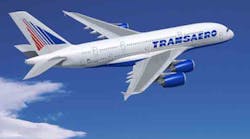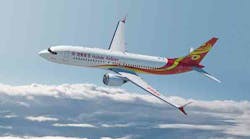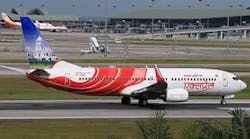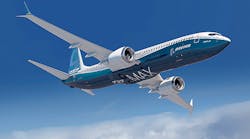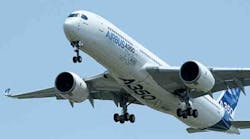Airbus released a summary of its 20-year forecast for the passenger-aircraft market in Russia and the Commonwealth of Independent States, indicating demand for over 2,000 jets by 2034, about 1,280 of which would be new aircraft. The OEM further indicated those new deliveries would be valued at $150 billion.
For comparison, rival Boeing Commercial Airplanes recently released details of its 20-year global market forecast, identifying Chinese demand for 6,330 new jets estimated at $950 billion, and Indian demand for 1,740 new aircraft worth $240 billion over that period.
In Russia/CIS as in those other regions, Airbus expects that in the next 20 years airlines will continue renewing fleets with more new fuel-efficient aircraft while phasing out older aircraft.
“The Russia & CIS market has always been of key strategic importance to Airbus, and we believe it will continue to grow, even with the recent challenges in the region, as air traffic has proven to be resilient to crisis around the globe,” according to Airbus EVP – Sales Christopher Buckley.
The jet builder noted that 28 airlines in the Russia/CIS region are operating over 340 Airbus models, including single-aisle and wide-body jets. Buckley said Airbus expects its deliveries to increase in Russia/CIS, and to achieve a 50% market share in the region over the period of the forecast.
However, almost simultaneous with the release of the regional forecast, Airbus postponed delivery of an A380 wide-body jet to Transaero Airlines (the second largest commercial carrier in Russia, after Aeroflot) as travel demand slows in that country. Last year Transaero ordered the four A380s and 20 A330 narrow-body aircraft, but those have not been listed as “firm orders.” Transaero also has booked four Boeing 747-8 aircraft, but there is no indication of delay on those projects.
The CIS is a loose confederation of former Soviet republics with nominal authority in trade, finance, lawmaking, and security. Along with Russia, the full members are Armenia, Azerbaijan, Belarus, Kazakhstan, Kyrgyzstan, Moldova, Tajikistan, and Uzbekistan. Georgia, Turkmenistan, and Ukraine are former Soviet republics, but are not CIS member states.
Airbus noted the regional economy will gain positive momentum and grow at 2.4% annually in the coming 20 years, with some countries (e.g., Uzbekistan, Kazakhstan) achieving annual growth as high as 4-5%.
Buckley noted that traffic to, from, and within Russia/CIS (measured as “revenue passenger kilometers,” or RPK) would increase 4.8% annually through 2034. That would be higher than the world average RPK growth rate of 4.6%.
“The region’s highest traffic growth is expected to be on international destinations to the Middle East (+6.6%), followed by traffic to Asia-Pacific (+5.9%) and Latin America (+5.3%),” he stated.
